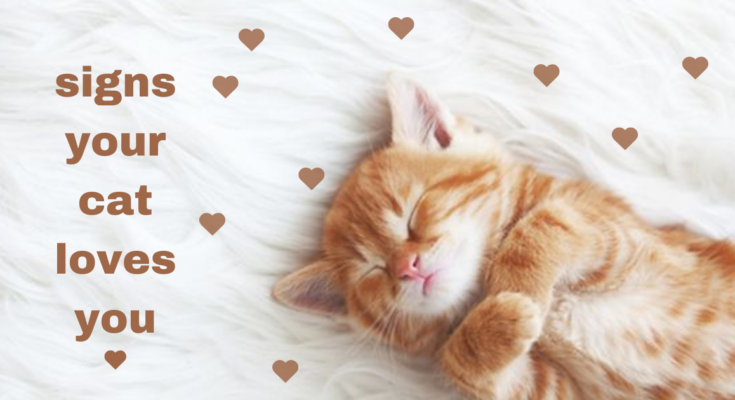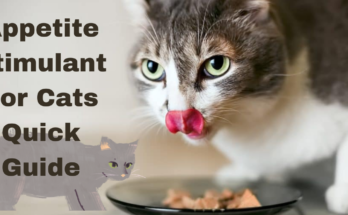There is a widespread misperception that cats are not loving animals. Indeed, it’s not always simple to win a cat’s affection, but there’s seldom a greater sense of achievement than when a cat starts to show you trust and admiration. With their licking, wagging tails, unceasing, often intrusive attention, and transparent “come play with me” body language, dogs, their furry counterparts, are much more forthcoming with their affection. Signs your cat loves you may help you to know how much your cat has affection for you.
Although cats are far more subdued in their displays of affection, the link between cats and people is nevertheless powerful, just as it is with dogs. To develop trust, you’ll have to put in more effort to learn your cat’s limits and love language.
Make sure your cat has been socialized.
Though not all cats can love in the way we want, cats may love their people. A cat acclimating to human interaction from an early age makes for an excellent companion.
According to Delgado, a kitten goes through a “sensitive stage” between two and nine weeks, during which they learn to get along with humans. Delgado says, “Kittens that adults handle at that time will be more open and trusting of people later in life.” Trupanion team veterinarian Dr Sarah Nold advises adopting a kitten no older than seven weeks for the quickest bonding.
A kitten may still learn to love someone once the sensitive phase ends, but it will take longer. Cats are domesticated animals, yet they can survive without human assistance. For example, a wild cat would never feel completely comfortable with humans, and vice versa. It would resemble attempting to domesticate a raccoon or squirrel. Delgado claims you wouldn’t wind up snuggling a raccoon.
About bringing stray cats home? That works in certain circumstances. “Although they may not have ever lived in a house, some cats that live outdoors do interact with humans often. By association, they discovered that individuals are generally decent. “They nourish me; I may put my confidence in them.”But adjusting to life inside will take some time,” Delgado says.
If you want your cat to love you, play hard to get.
If you own a cat, you may feel compelled to snuggle with your friend immediately. However, Delgado suggests allowing your feline to lead the conversation. Research has shown that cats want to approach people first. Delgado adds that you’ll have a better relationship if you let them initiate the conversation.
Delgado continues, “Your cat will trust you more over time because you respect its boundaries.” This dynamic explains why cat allergy sufferers often claim that cats adore them. “They’re completely ignoring the cat, and since they’re not being forceful, the cat is like, Ooh, I want to sit on that human.”
How Cats Show Affection & Bond to You
Survival-oriented imprinting on their mothers is an inherent characteristic of newborn canines.
Kitty puppies understand that their mother is their protector, source of sustenance, and solace during this critical bonding period.
Although it is improbable that cats would misidentify us as their biological mothers or imprint similarly, they can develop a profound sense of trust in their human caretakers, according to Feline Minds consultant and cat behavior expert Mikel Delgado.
Delgado explains, “Although we do not know if our cats believe we are cats, I am certain they can develop a sense of trust in us over time through socialization and repeated positive, affectionate experiences.”
SIGNS THAT YOUR CAT LOVES YOU
MEOWING, PURRING & TRILLING
Cats only meow to communicate with humans; did you know that? Although they don’t need to speak to one another, cats quickly pick out that meowing at people will get them food, snacks, a pat, or an open door.
Cats are anything but quiet, as anybody who spends time with one can attest. Other sounds produced by cats include:
- Chattering (typically while they are observing prey).
- Trilling (a high-pitched chirp).
- Purring (a rhythmic rumbling of the throat).
Your cat is trying to tell you they like you by meowing, purring, and trilling, which are unique indicators of their bond with you! However, remember that cats may purr as a coping mechanism for stress or illness, so consider the situation carefully.
Slow Blinking
One saying goes, “The eyes are the windows to the soul.” Avoid eye contact with some animals since they may see it as hostile. Slow Blinking is a sign that your cat loves you.
On the other hand, cats prefer to gaze straight into the eyes of humans they trust and love, using eye contact to express devotion.
They often make eye contact, lowering their lids and blinking slowly and steadily. Considered the feline equivalent of a kiss, you may even return the favor by slowly blinking at cats.
Headbutting
To express love, your cat could brush their cheeks against you or bump their head against you. Headbutting other kittens and their mother throughout the kittenhood develops this social trait.
Often, it’s an effort to identify you as their own by leaving you with their fragrance. It is a gesture of affection from cats to their people and aids in their socialization. Headbutting is a sign that your cat loves you
Grooming is Sign Your Cat Loves You
Cats groom one another as an expression of affection; if they gain human trust, they will even groom humans. Cats frequently permit their owners to lick or brush them.
Cats often let their humans brush or lick them. Grooming is a sign that your cat loves you.
Licking enables them to mark one another and is akin to the grooming they would do on their feline companions. A cat and a human connect via grooming. However, keep an eye out for rapid tail swishing and listen for any growling or hissing since brushing—especially vigorous—can be overstimulating if done forcefully or for an extended period.
Kneading
Typically, cats use their front paws to knead. This habit, connected to nursing their mother, starts while the kittens are young. Kneading is an activity that can induce cerebral relaxation and release endorphins once lactation has ended. Kneading is a sign that your cat loves you
Cats that are at ease and kneading demonstrate satisfaction. When you brush or pet them softly, they often knead. Though thought natural, cats sometimes knead to soften their sleeping surface.
WATCH HOW THEY GREET YOU
How your cat welcomes you is one of the clearest indications that your cherished pet thinks highly of you. Cats use cues to convey friendliness and a willingness to approach when they greet others in their social group. These are messages that cats send to people as well.
The cat version of a wave, an elevated tail, displays friendliness, love, and trust. Additionally, some cats express their desire to play or greet someone they like by erecting their tails as a question mark.
The human counterpart of a cat twirling its tail around your calf is a symbol of friendliness. Cats sometimes do this. Greeting with love is a sign that your cat loves you
Another sign that a cat has complete faith in you is when they roll over and reveal their tender underbelly. Nevertheless, as cats like to have their heads and necks touched, this is often not a request for a belly rub.
When you try to brush a cat’s tummy, they usually run away quickly or even lash out. Cats welcome their chosen people with a melodic sound called a chirrup or trill greeting. You may be sure that your cat is happy to see you if they sing to you in this manner.
Your cat may sense a strong affinity with you if they give you that comforting sensation when they bump against the back of your knee. A head bump, like a high-five but reserved for a cat’s closest feline companions and most reliable human, is a common gesture.
THEY GET UP CLOSE WHEN CAT LOVES YOU
Cats dislike having strangers invading their personal space since they are very protective of it. Allowing yourself to become close to a cat indicates a close attachment, especially if you have regular or sustained contact with them.
Sleeping curled up on your lap conveys a strong sense of trust. Cats groom each other only when they have a loving connection, so even though their sharp tongues may not feel all that kind, licking your hand or face might be a sign of affection.
Does My Cat Know I Love Them?
According to Delgado, it is impossible to tell if cats comprehend love, at least not in the same sense as people.
According to the author, cats develop an association between specific individuals, environments, and actions and favorable consequences or contentment while attributing negative connotations to other individuals, locations, and actions.
Naturally, cats have learned to seek out people and situations that make them happy.
Delgado notes that this is not to argue that cats do not experience true connection or love. She acknowledges that cats link with and feel affection and love for us but notes that these emotions probably vary from the kind of love humans feel.
One study examined how a pet parent’s interpretation of their cat’s personality impacted their interactions. Compared to cats that characterized themselves as “aloof,” those who were energetic, brave, or sociable had more favorable encounters and emotional connectedness with humans.
However, realizing that a cat’s reserve doesn’t always translate into a lack of care for you is crucial. Knowing your cat’s special love language can help you and your cat have a closer relationship.
Delgado says, “Many cats prefer encounters that are high in frequency and mild in intensity.” “After a minute or two of lap time or caressing, they could be content and ready to go on.”
Summary
It is a common misconception that cats lack affection; however, their subdued displays of affection can convey admiration and trust.
Learning your cat’s limits and love language is important to develop trust. Cats can love their people from an early age, and a kitten goes through a “sensitive stage” between two and nine weeks. To get your cat to love you, play hard to get them to initiate the conversation and respect their boundaries. Cats exhibit affection and form bonds with humans by imitating their mothers’ survival strategies, and through socialization and repeated positive experiences, they can develop a profound sense of trust in their human caretakers.
Cats express love through various behaviors, such as headbutting, grooming, kneading, greeting, getting up close, and expressing trust. They use cues like elevated tails, chirrups, and head bumps to show friendliness and trust. They also prefer encounters that are high in frequency and mild in intensity, such as sleeping curled up on your lap. Cats may make connections between specific people, places, and behaviors and assign happy endings or contented emotions to others, even if their conception of love may be different from ours.
Understanding your cat’s love language can help you and your cat have a closer relationship. Remember, cats prefer encounters that are high in frequency and mild in intensity.





Уборка квартиры в Новосибирске: мы создаем уют в каждом уголке вашего дома
Уборка квартир chisty-list.online.
Большое спасибо, что нашли время прочитать мою статью! Я очень рад слышать, что вам было интересно. Если у вас есть какие-либо вопросы или вы хотите узнать что-то конкретное, не стесняйтесь спрашивать. Ваше мнение очень ценится.
СПб Уборка: Придайте своему жилью безупречный вид с нашей помощью
уборка квартиры спб http://chisty-list.ru/.
Большое спасибо, что нашли время прочитать мою статью! Я очень рад слышать, что вам было интересно. Если у вас есть какие-либо вопросы или вы хотите узнать что-то конкретное, не стесняйтесь спрашивать. Ваше мнение очень ценится.
Insightful piece